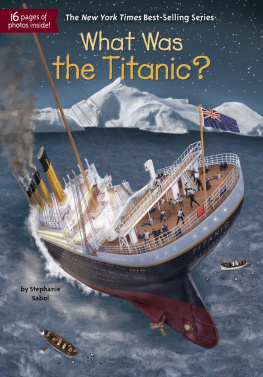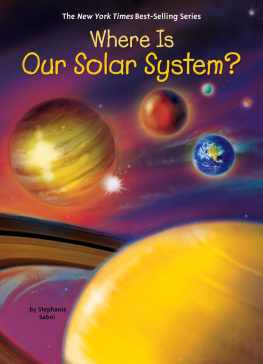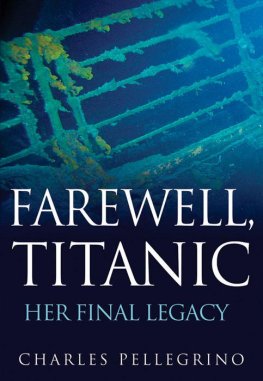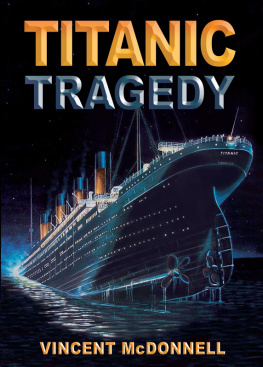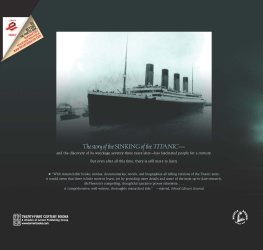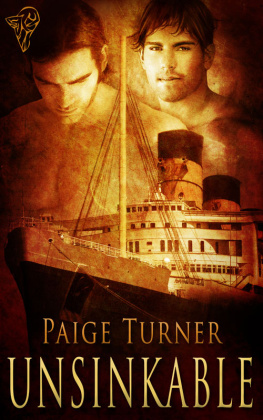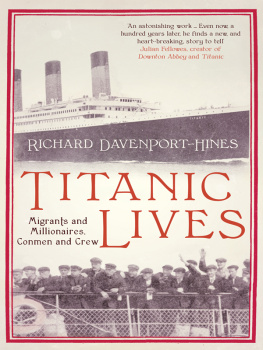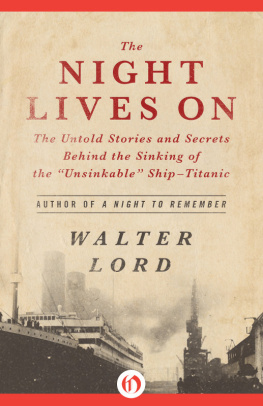For my sister TinaSS
For my unsinkable mom, with loveGC
PENGUIN WORKSHOP
Penguin Young Readers Group
An Imprint of Penguin Random House LLC

If you purchased this book without a cover, you should be aware that this book is stolen property. It was reported as unsold and destroyed to the publisher, and neither the author nor the publisher has received any payment for this stripped book.
Penguin supports copyright. Copyright fuels creativity, encourages diverse voices, promotes free speech, and creates a vibrant culture. Thank you for buying an authorized edition of this book and for complying with copyright laws by not reproducing, scanning, or distributing any part of it in any form without permission. You are supporting writers and allowing Penguin to continue to publish books for every reader.
Copyright 2018 by Penguin Random House LLC. All rights reserved. Published by Penguin Workshop, an imprint of Penguin Random House LLC, 345 Hudson Street, New York, New York 10014. PENGUIN and PENGUIN WORKSHOP are trademarks of Penguin Books Ltd. WHO HQ & Design is a registered trademark of Penguin Random House LLC.
Library of Congress Cataloging-in-Publication Data is available.
ISBN 9780515157260 (paperback)
ISBN 9780515157284 (library binding)
ISBN 9780515157277 (ebook)
Version_1
What Was the Titanic ?
April 14, 1912
The grandest luxury ship ever, the Titanic, was crossing the Atlantic Ocean. It was on its maiden, or first, voyage. The ship had left England four days earlier. It was making great time. In just a few days, the Titanic was scheduled to arrive in New York City.
Aboard ship, the evening of April 14 seemed just like any other. First-class passengers enjoyed a feast with ten courses, including oysters and filet mignon. The Titanics captain, Edward John Smith, joined a dinner party in first class. It was hosted by a wealthy couple from Philadelphia.
After dinner, some first-class passengers played cards or listened to the orchestra. In second class, a minister sang hymns with about one hundred people. Down in third class, passengers danced together in their lounge, known as the general room. But after a long day at sea, many aboard the Titanic were already in bed.
Captain Smith checked in with his officers at the bridge around 9:00 p.m. The bridge was the command center of the ship. Smith told his officers to let him know if any problem arose. Then he went to his cabin.
Outside, the night was very cold. There was no moon, but the sky was clear. Thousands of stars shone brightly. The sea was so calm it looked like a mirror. No waves rippled in the distance.
Up in the crows nest, two lookouts kept watch, ready to spot danger. In this part of the Atlantic, ice was a concern. Ships had to be very careful to avoid hitting an iceberg. The two lookouts chatted and tried to keep warm.
Then suddenly, at 11:40 p.m., almost out of nowhere, a large black shape came into view.
Could it be... ?
Yes, it was an iceberg!
The iceberg was almost directly ahead of the ship. It looked like the ship might run straight into it! The lookouts rang the warning bell three timesthe signal for an emergency. They telephoned the bridge where the officers were stationed. Iceberg, right ahead! they shouted.
The officers only had thirty-seven seconds to respond. First Officer William Murdoch contacted the engine room and ordered the ships engines stopped and put into reverse. Would the Titanic avoid the iceberg? Or was it too late?
CHAPTER 1
The Age of Steam
Until the mid-1700s, ships had sails and relied on the power of the wind to move. Because winds are unpredictable, it wasnt possible to know exactly how long a trip would take. A ship might cross the Atlantic Ocean in either a few weeks or a few months.
By the early 1800s, steam engines began to power ships instead of sails. These steamships could cross the Atlantic in only two to four weeks.
Eventually, more powerful engines were built. A steamship with a powerful engine could cross the ocean in just ten to fourteen days.
Steamships grew in size over the years. They became known as ocean liners because they traveled the same route, or line, regularly. These lines were like invisible roads across the ocean.
For rich passengers, crossing the Atlantic on an ocean liner was like being on a vacation. They enjoyed fine meals and luxurious cabins. For poor immigrants in the tight quarters of third class, the voyage offered the chance to leave their home countries and start new lives in the United States. Millions of immigrants came to America from Europe during the late 1800s and early 1900s on enormous steamships.
At the end of the nineteenth century, two British shipping companiesthe White Star Line and the Cunard Linewere in fierce competition with each other. In 1907, Cunard completed two ocean liners that could cross the Atlantic in only five days! How could the White Star Line show up Cunard? They couldnt make a faster ship. That wasnt possible. But could they make a bigger one?
CHAPTER 2
Building the Titanic
The White Star Line decided to build three new ships. One would be named the Titanic. (The names of all White Star Line ships ended in ic.) Hundreds of blueprints and drawings were made. These plans would guide the workers during construction.
The Shipyard
The Titanic was going to be so big that a single slip (a ramp where ships are constructed) couldnt provide enough space. So three slips were turned into two. Then a giant metal gantry was built over the slip. A gantry is a bridge-like structure that supports equipment, such as cranes. This gantry was the largest in the worldalmost one and a half times the length of a football field and as high as a nineteen-story building!
In March 1909, construction began at a huge shipyard in Belfast, Northern Ireland. Ships are built from the bottom up. First came the keel, which serves as the backbone of the ship and lies on its bottom. The keel is made of steel and supports the rest of the ship.

